There are four types vibration testing profiles; each designed to simulate the vibration energy observed on each unique system.
The decision to select the ideal profile to perform a vibration test should be depending on the environment and the goal of the test program.
1. Sinusoidal or Sine vibration testing
2. Random vibration testing
3. SOR Sine on Random
4. ROR Random on Random
Sinusoidal or Sine Vibration Testing
Sinusoidal vibration testing, also known as sine vibration testing, uses the vibration shaker to input the vibration energy in a sinusoidal waveform.
The amplitude and frequency of the sinusoidal waveform is changed depending on the testing condition.
Paragon Systems Testing performs three forms of sine vibration tests:
1. Sine sweep vibration testing
2. Sine dwell vibration testing
3. Sine-on-random vibration testing
Sinusoidal (Sine Sweep) Testing
In a sine sweep test, a vibration sine tone will sweep up and down through a range of frequencies at a specific rate and duration.
The acceleration (g) levels and displacements can be a constant or a variable, depending on the test standard.
Sinusoidal testing is typically used to study structural / resonance response of the DUT within a frequency range.
The test identifies resonances by comparing the response vibrations data of the device under test (DUT) to the data generated by vibrations on the shaker table.
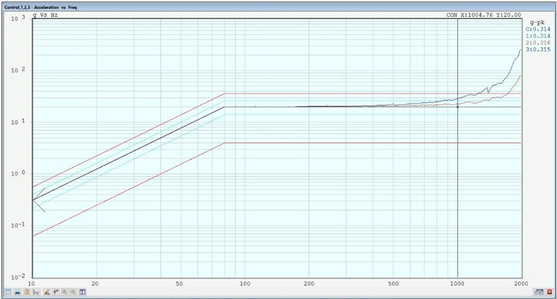
Sine Dwell Vibration Testing
The device under test (DUT) vibrates at a specific frequency and acceleration (g) level amplitude. In most cases, the dwells are performed at resonances found within the DUT and / or performed at frequencies that simulate the environmental condition where the DUT will be operated in.
In a sine dwell vibration test, structural resonances can be controlled.
There are either high response level resonances or low-level resonances.
A common application of this test is a fatigue test, meaning that a sinusoidal test is used to determine the endurance of a product.
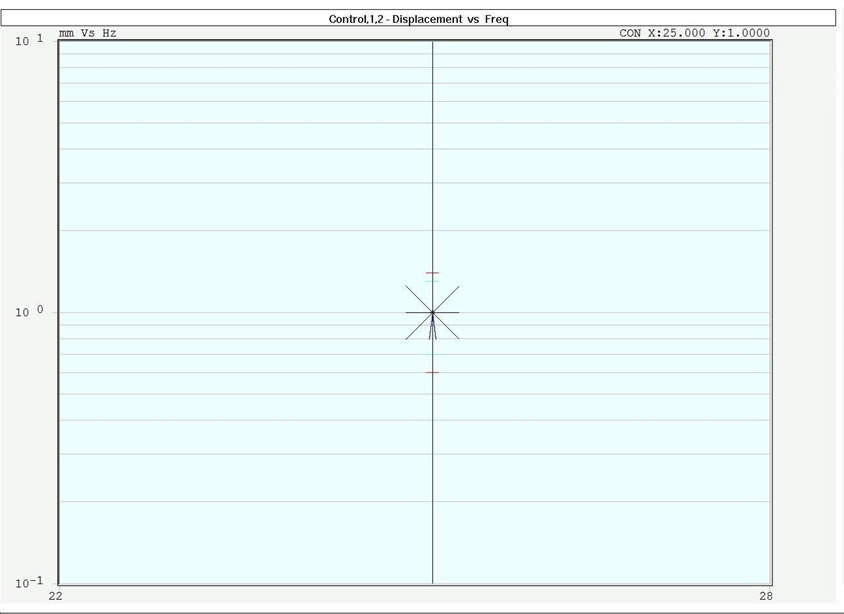
Sine-on-Random (SOR) Vibration Testing
In this test, sinusoidal tones are specifically placed over a random vibration profile. SOR test typically simulates environments for propeller driven airplanes and helicopters. Sine-on-Random Vibration Testing is also known as Mixed Mode Vibration Testing.
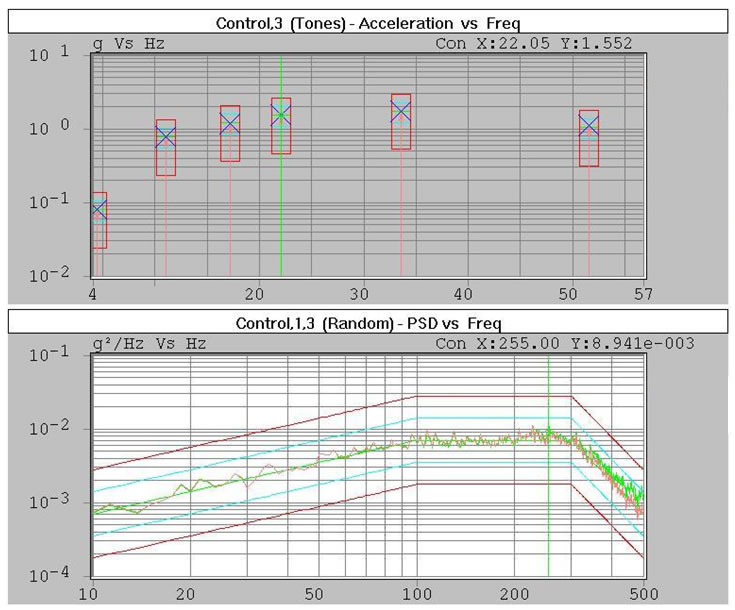
In summary, Sine testing is used in identifying resonant conditions within a device under test (DUT). For example, on an electronic module the circuit boards are often the main resonant structures and typically their fatigue conditions are most important to understand.
However, the components themselves mounted on the PCB as well as the electronics housing also have their own unique natural resonant conditions which are usually different than the circuit boards.
We can use sine vibration to identify these resonant conditions on the PCB or on other test item structures in an effective way to understand the flow of mechanical vibration through a device which will help product owners to stiffen or dampen elements of the product to reduce the probability of a fatigue failure.

Some common test standards that have specifications for Sinusoidal Vibration Testing are:
ASTM D999 Standard Test Methods for Vibration Testing of Shipping Containers
ASTM D3580 Standard Test Methods for Vibration (Vertical Linear Motion) Test of Products
IEC 60068-2-6 Environmental testing Part 2-6: Tests –Test Fc: Vibration (sinusoidal)
MIL-STD 167 Department of Defense Test Method Standard – Mechanical Vibrations of Shipboard Equipment
MIL-STD-202 Department of Defense Test Method Standard for Electronic and Electrical Component Parts
MIL-STD-750 Test Methods for Semiconductor Devices
MIL-STD-810 Department of Defense Test Method Standard for Environmental Engineering Considerations and Laboratory Tests
MIL-STD-883 Department of Defense Test Method Standard for Microcircuits
RTCA DO-160 Environmental Conditions and Test Procedures for Airborne Equipment
Random Vibration Testing
In real life situation, vibrations are usually in random form. Random vibrations can be found in automobiles, aircraft, rockets etc.
Random vibration testing involves running of vibration energy at all frequencies over a specified range on a device under test (DUT) simultaneously. This is the most effective when the test is based on actual field measurements of the specific environment where a product will be operated.
Due to this (the process of conducting random vibration testing) and the statistical nature of random data, random vibration testing is most suited for vibration qualification tests.
Using an accelerometer or multiple accelerometers to capture the in-situ vibration environment, a random power spectral density plot can be created.
This will allow the test to run at the level recorded or at increased levels.
By increasing the levels, it accelerates fatigue and reduces test time.
On a random vibration power spectral density plot, the acceleration amplitude is scaled on the y-axis in units of g2/Hz and the x-axis in units of frequency (Hz).
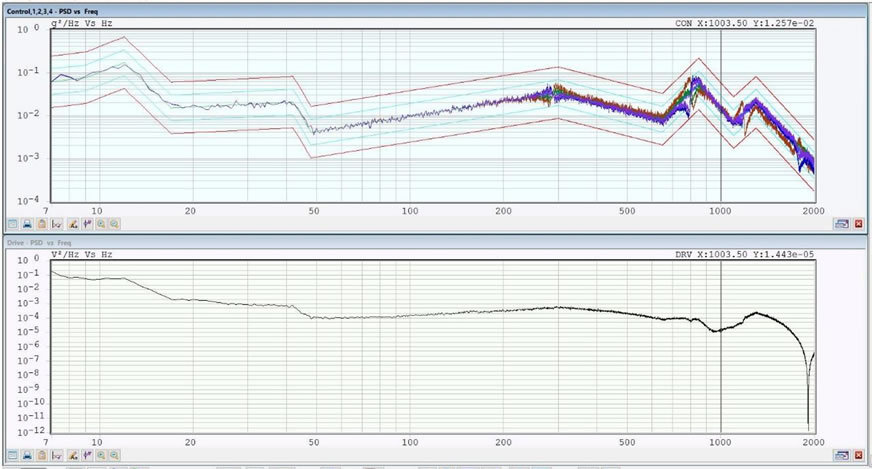
ROR Random on Random
When the vibration environment has two unique random vibration characteristics, then the random vibration profile can also be tailored to include random vibration applied over another random vibration background.
This type of test is the most common type of validation and qualification test performed for electronic components. This can perform tests including components production stress, screening to prototype testing, and qualification of products to military standards.
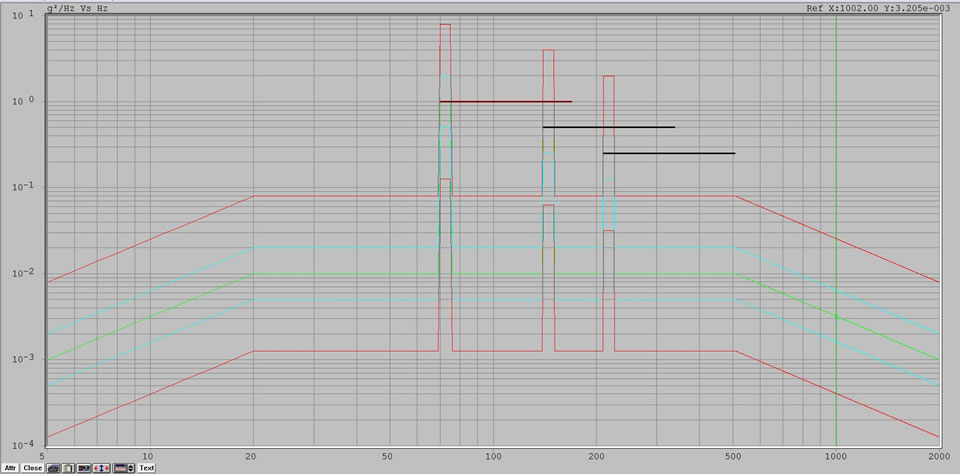
Common test standards that have specifications for Random Vibration Testing are:
ASTM D4169 Standard Practice for Performance Testing of Shipping Containers and Systems
ASTM D4728 Standard Test Method for Random Vibration Testing of Shipping Container
GMW 3172 General Motors Specification for Electrical/Electronic Components – Environmental/Durability
IEC 60068-2-64 Environmental testing Part 2-64: Tests Fh: Vibration, Broadband Random and Guidance
ISTA 2A and 3A Procedures for Testing Packaged Products
MIL-STD-202 Department of Defense Test Method Standard for Electronic and Electrical Component Parts
MIL-STD-810 Department of Defense Test Method Standard for Environmental Engineering Considerations and Laboratory Tests
MIL-STD-883 Department of Defense Test Method Standard for Microcircuits
RTCA DO-160 Environmental Conditions and Test Procedures for Airborne Equipment
SAE J1455 Recommended Environmental Practices for Electronic Equipment Design in Heavy-Duty Vehicle Applications
The most important piece in vibration testing is the fixture as it plays a major role in getting reliable and accurate test results. The fixture shall transfer the vibration energy created by the test profile to the mounting locations on the test sample without amplification nor dampening. ie. 1g of energy inputted, 1g of energy outputted.
An unqualified fixture can result to either over testing of the DUT, resulting in false failures or under testing the DUT leading to a false pass.
Therefore, designing a fixture and qualifying its resonant response in an acceptable range is very crucial. Although, most standards do not go into detail regarding fixtures, leaving it to the discretion of the test engineer.
At Paragon Systems Vibration Testing Labs, we have the capacity to design, fabricate and qualify fixtures to suit the DUT as well as the shaker table which it would be attached to.
We are committed to working with you to ensure your products are tested within the specified standard, cross all t’s and dot all I’s to provide an accurate vibration representation of the real life environment.
